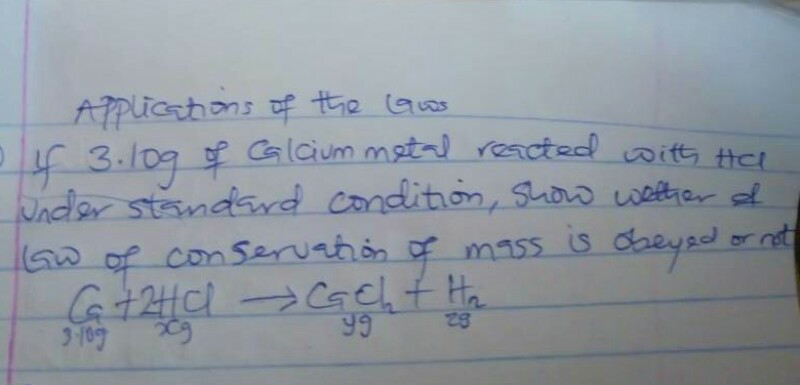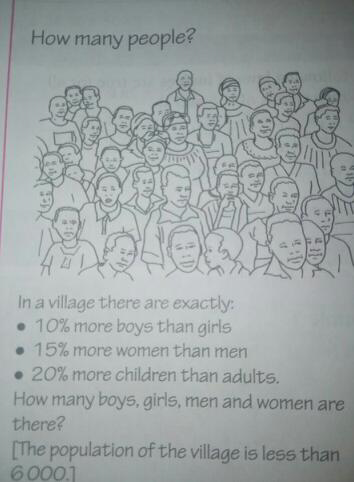
Question and Answers Forum
OthersQuestion and Answers: Page 133



Pg 128 Pg 129 Pg 130 Pg 131 Pg 132 Pg 133 Pg 134 Pg 135 Pg 136 Pg 137
|
Question and Answers Forum |
OthersQuestion and Answers: Page 133 |
| A particle slides down a frictionless parabolic (y = x^2 ) track (A − B − C) starting from rest at point A. Point B is at the vertex of parabola and point C is at a height less than that of point A. After C, the particle moves freely in air as a projectile. If the particle reaches highest point at P, then (a) KE at P = KE at B (b) height at P = height at A (c) total energy at P = total energy at A (d) time of travel from A to B = time of travel from B to P. |
| One mole of a monoatomic real gas satisfies the equation p(V − b) = RT where b is a constant. The relationship of interatomic potential V(r) and interatomic distance r for the gas is given by |
| Two particles of mass m each are tied at the ends of a light string of length 2a. The whole system is kept on a frictionless horizontal surface with the string held tight so that each mass is at a distance ′a′ from the center P (as shown in the figure). Now, the mid-point of the string is pulled vertically upwards with a small but constant force F. As a result, the particles move towards each other on the surface. The magnitude of acceleration, when the separation between them becomes 2x, is |
| Find the compression in the spring if the system shown below is in equilibrium. |
| Figure shows an arrangement of blocks, pulley and strings. Strings and pulley are massless and frictionless. The relation between acceleration of the blocks as shown in the figure is |
| Figure shows a small bob of mass m suspended from a point on a thin rod by a light inextensible string of length l. The rod is rigidly fixed on a circular platform. The platform is set into rotation. The minimum angular speed ω, for which the bob loses contact with the vertical rod, is (1) (√(g/l)) (2) (√((2g)/l)) (3) (√(g/(2l))) (4) (√(g/(4l))) |

|
| A ball is bouncing elastically with a speed 1 m/s between walls of a railway compartment of size 10 m in a direction perpendicular to walls. The train is moving at a constant velocity of 10 m/s parallel to the direction of motion of the ball. As seen from the ground (a) the direction of motion of the ball changes every 10 seconds. (b) speed of ball changes every 10 seconds. (c) average speed of ball over any 20 second interval is fixed. (d) the acceleration of ball is the same as from the train. |
| STATEMENT-1 : The locus of z, if arg(((z − 1)/(z + 1))) = (π/2) is a circle. and STATEMENT-2 : ∣((z − 2)/(z + 2))∣ = (π/2), then the locus of z is a circle. |
| if 3^(2n+3) =m,find 3^(−n) |
| Suppose in the plane 10 pairwise nonparallel lines intersect one another. What is the maximum possible number of polygons (with finite areas) that can be formed? |
| The values of ′k′ for which the equation ∣x∣^2 (∣x∣^2 − 2k + 1) = 1 − k^2 , has repeated roots, when k belongs to (1) {1, −1} (2) {0, 1} (3) {0, −1} (4) {2, 3} |
| Let us consider an equation f(x) = x^3 − 3x + k = 0. Then the values of k for which the equation has 1. Exactly one root which is positive, then k belongs to 2. Exactly one root which is negative, then k belongs to 3. One negative and two positive root if k belongs to |
| If the equation 2cos2x − (a + 7)cosx + 3a − 13 = 0 possesses atleast one real solution, then the maximum integral value of ′a′ can be |

|
| A spring with one end attached to a mass and the other to a rigid support is stretched and released. (a) Magnitude of acceleration, when just released is maximum. (b) Magnitude of acceleration, when at equilibrium position, is maximum. (c) Speed is maximum when mass is at equilibrium position. (d) Magnitude of displacement is always maximum whenever speed is minimum. |
| In the figure shown below, the block of mass 2 kg is at rest. If the spring constant of both the springs A and B is 100 N/m and spring B is cut at t = 0, then magnitude of acceleration of block immediately is |

|
| A 50 kg log rest on the smooth horizontal surface. A motor deliver a towing force T as shown below. The momentum of the particle at t = 5 s is |
| A ball of mass m is moving with a velocity u rebounds from a wall with same speed. The collision is assumed to be elastic and the force of interaction between the ball and the wall varies as shown in the figure given below. The value of F_m is |
| A graph of x versus t is shown in Figure. Choose correct alternatives from below. (a) The particle was released from rest at t = 0 (b) At B, the acceleration a > 0 (c) At C, the velocity and the acceleration vanish (d) Average velocity for the motion between A and D is positive (e) The speed at D exceeds that at E. |
| A body starts rotating about a stationary axis with an angular acceleration b = 2t rad/s^2 . How soon after the beginning of rotation will the total acceleration vector of an arbitrary point on the body forms an angle of 60° with its velocity vector? (1) (2(√3))^(1/3) s (2) (2(√3))^(1/2) s (3) (2(√3)) s (4) (2(√3))^2 s |
| Two shells are fired from a canon with speed u each, at angles of α and β respectively with the horizontal. The time interval between the shots is t. They collide in mid air after time T from the first shot. Which of the following conditions must be satisfied? (a) α > β (b) T cos α = (T − t) cos β (c) (T − t) cos α = T cos β (d) u sin α T − (1/2) g T^2 = u sin β (T − t) − (1/2) g (T − t)^2 |
| The Figure shows a system consisting of (i) a ring of outer radius 3R rolling clockwise without slipping on a horizontal surface with angular speed ω and (ii) an inner disc of radius 2R rotating anti-clockwise with angular speed ω/2. The ring and disc are separated by frictionless ball bearing. The system is in the x-z plane. The point P on the inner disc is at a distance R from the origin, where OP makes an angle 30° with the horizontal. Then with respect to the horizontal surface (a) The point O has a linear velocity 3Rωi^∧ (b) The point P has a linear velocity ((11)/4)Rωi^∧ + ((√3)/4)Rωk^∧ |
| Acceleration of a particle which is at rest at x = 0 is a^→ = (4 − 2x) i^∧ . Select the correct alternative(s). (a) Maximum speed of the particle is 4 units (b) Particle further comes to rest at x = 4 (c) Particle oscillates about x = 2 (d) Particle will continuously accelerate along the x-axis. |
| Two particles A and B start from the same position along the circular path of radius 0.5 m with a speed v_A = 1 ms^(−1) and v_B = 1.2 ms^(−1) in opposite direction. Determine the time before they collide. |
Pg 128 Pg 129 Pg 130 Pg 131 Pg 132 Pg 133 Pg 134 Pg 135 Pg 136 Pg 137 |